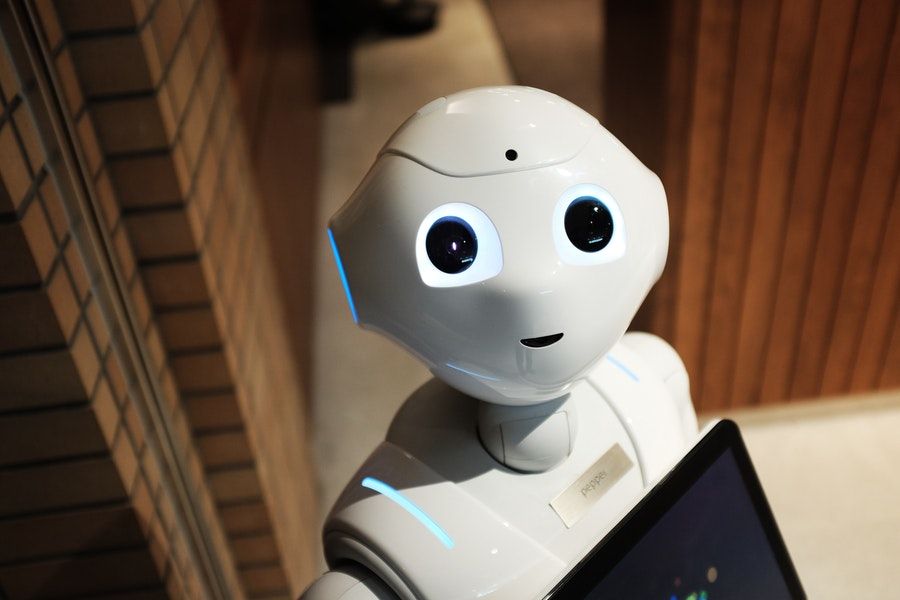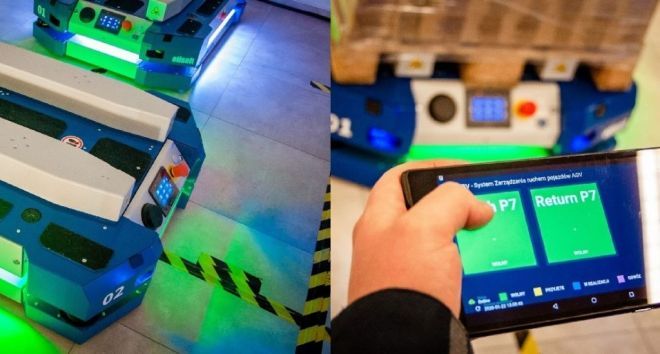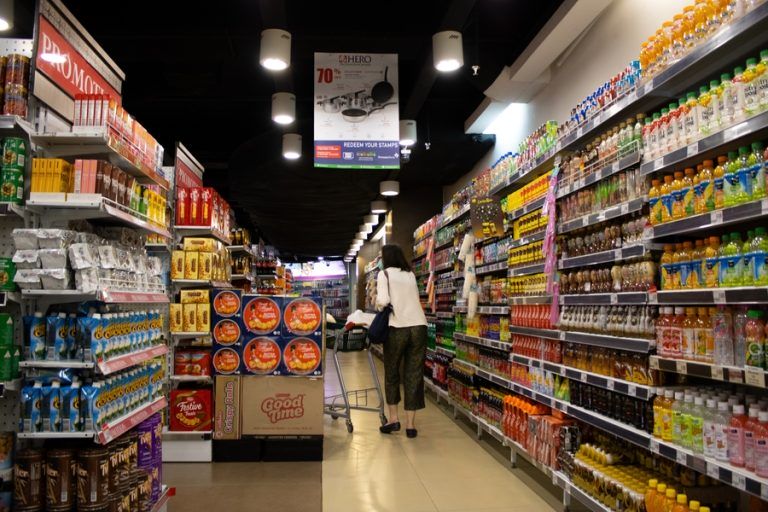Robotisation in retail & logistics – overview for 2020, part II

Wpis dostępny jest także w języku:
![]() polski
polski
Bartłomiej Łatka, Sales Director at Euvic IT, writes in the second part of the article about what robotization has to offer to the retail segment in 2020.
Mobile robots

Recently, mobile robots have been pushing people out of storage space in large warehouses. There is a shortage of warehousemen throughout Poland, and warehouses often located on the outskirts of cities or even in the fields, struggling to provide staff. Especially during the holiday or flu season. Relatively high salaries, regulated by the law for working at night or on public holidays, as well as the risk of loss of manning – all that makes automated internal transport systems seem to have the best years ahead.
Among mobile solutions in trade and logistics we can distinguish the following groups:
- Transport P2P (Point-to-Point) – AMR trolleys carrying baskets around the warehouse, driving shelves with assortment put into them by a man, or intelligent rack. All this makes the human work of handling transport redundant.
- Intalogistics transport systems based on AGV, automated rollers and integration with MES storage systems. In addition to eliminating manpower during loading and transport, the systems also take care of automatic mission sequence management or traffic optimization, and during reduced traffic (e.g. at night) they sort the warehouse contents and e.g. Pallets, which are primarily intended for loading, move closer to the terminals in order to shorten its time.
- Automated data collection – that is, mobile stations performing inventory by scanning labels or RFID tags, as well as analysing unstructured image. They are able to notice the lack of goods on the shelf or placing the wrong product in the wrong place.
Mobile robots can be divided into AGV (Automated Guided Vehicles) and AMR (Autonomous Mobile Robots).
AGV systems allow:
- Reducing cost of internal transport.
- Replacing forklift trucks, operators and operators with autonomous AMR vehicles.
- Optimization of transport orders in real time.
Sorting operations such as sorting to robots during reduced traffic hours. - Elimination of additional human and infrastructure costs in onerous, harmful and special working environments.
Reduction of additional labour costs related to absenteeism, night work and weekends.
AMR systems, on the other hand, allow:
- Automated material transport.
Faster and more accurate data collection in industrial and commercial environments.
Up to 2-3 times better picking performance. - Cost efficiency.
Effective management of growth, seasonal occupancy and staffing needs.

R as Robotization
Robotic arms, Machine Vision systems and mobile robots are part of Euvic’s extensive retail offering. Cooperation with partners such as Etisoft or Zebra Technologies has a positive impact on the optimization of store operations and better use of resources and human capital. Robotization of the retail industry allows to create ideal environments for shoppers, and additionally frees employees from repetitive, monotonous tasks. Thanks to it, there is a possibility to eliminate problems with stocks and prices and easier observance of accepted standards and requirements, which in effect contributes to the improvement of overall store efficiency. As I wrote at the beginning, in recent years there has been a significant increase in robotization in both retail and logistics. However, all indications are that the investments made in this area are only the beginning of real development and the biggest players still have a real revolution ahead of them. I have already given some examples of automation in the retail sector, in my article on technological trends in retail, but today, once again, I would like to stress that there will be no turning back from robotization. After all, wherever there are repetitive processes, a robot’s work will always be cheaper and more accurate than that of a human being.
The author of the article is Bartlomiej Latka, Sales Director at Euvic IT.







